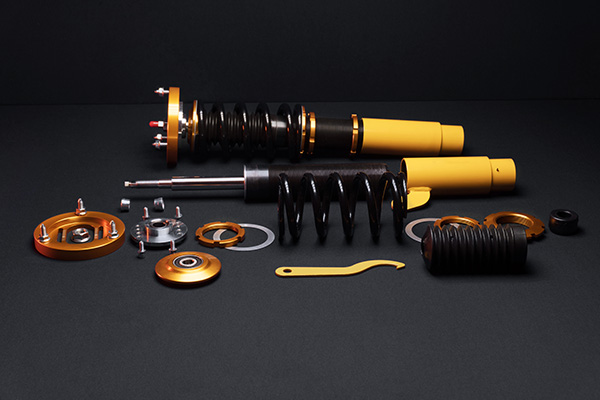
Your car’s suspension system is designed to keep your ride stable, absorb road impacts, and ensure smooth handling. While many drivers use the terms shocks, struts, and springs interchangeably, they actually play distinct roles in maintaining your car’s performance and comfort.
If your vehicle feels bouncy, unstable, or difficult to control, there’s a good chance one or more of these components are wearing out. Understanding how they work and how they differ can help you recognize when it’s time for repairs or replacements.
The Role of Springs in Your Suspension
Springs are the foundation of your suspension system, supporting the weight of the vehicle and absorbing bumps in the road. They help maintain proper ride height and stability, preventing the car from bottoming out when driving over uneven terrain.
There are different types of springs used in vehicles, including:
- Coil Springs: Common in most modern cars, coil springs provide a flexible yet sturdy way to absorb shocks and maintain a comfortable ride.
- Leaf Springs: Often found in trucks and older vehicles, these stacked metal strips provide strong support for heavy loads.
- Torsion Bars: Used in some SUVs and trucks, torsion bars function like springs by twisting to absorb impact.
Springs do not control movement on their own, which is why shocks and struts are necessary to keep the ride stable and prevent excessive bouncing.
What Are Shocks and What Do They Do
Shocks, or shock absorbers, work with the springs to dampen the impact of bumps and dips in the road. Their main job is to control motion—without shocks, your car would continue bouncing after hitting a pothole or speed bump.
A shock absorber contains a piston and hydraulic fluid that work together to slow down the movement of the springs. This ensures that your tires maintain consistent contact with the road, improving handling and braking performance.
Signs your shocks might be worn out include:
- Excessive bouncing after hitting a bump.
- A swaying or floating sensation when driving.
- Uneven tire wear due to poor contact with the road.
If your car feels unstable or takes longer to stop, it’s time to have the shocks inspected.
How Struts Differ from Shocks
Struts perform the same function as shocks, but they are designed differently and serve an additional purpose. While shocks work separately from the suspension, struts combine a shock absorber and a structural component into one unit. This means they help with both motion control and structural support for the suspension system.
Because struts are a load-bearing part of the suspension, they play a bigger role in maintaining alignment and overall vehicle stability. If a strut fails, it can impact steering response, tire wear, and even fuel efficiency.
Common signs of failing struts include:
Unlike shocks, which are typically replaced in pairs, struts should always be replaced in full sets to maintain balance and handling.
Why Suspension Maintenance Is Necessary
Your suspension system is responsible for more than just comfort—it affects safety, tire wear, and fuel efficiency. Worn-out shocks, struts, or springs can lead to poor handling, increased stopping distances, and uneven tire wear, all of which make driving less predictable and more dangerous.
For drivers in Covina, CA, where road conditions can vary, keeping your suspension in top shape ensures that your car remains safe and comfortable no matter where you drive.
Is your car feeling bouncy or unstable? Let TL Motors in Covina, CA, inspect your shocks, struts, and suspension system. Book an appointment today!